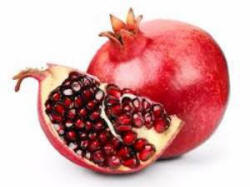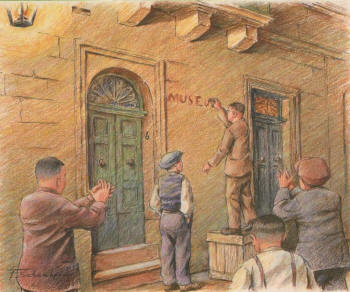Read online
That Skin of a Pomegranate Fruit
March 1907 - A group of young lads from Ħamrun, a small town in Malta gather in front of a small house, number 6, Fra Diego street. They had arranged to rent an upstairs room to use as their meeting place for the newly formed group they were part of. George Preca, a newly ordained priest had started talking to them some time earlier that year. Things evolved and it was decided it was better to have a roof over their head and a base where to continue meeting with the young priest.
Anyone familiar with the history of SDC or the life its of its founder would have heard the story of how soon after the first meetings between Fr Preca and his first followers, the name MUSEUM was chosen as a name of the new group. Salvu Muscat who came up with the name had reasons to suggest such a name. He said, ‘You would normally find valuable objects in a normal Museum – what is more valuable than the Word of God that we treasure and try to disseminate in our group?’
Later on, in due course, Fr Preca himself reflected on the name MUSEUM. He even used each letter of that name to form an acrostic type of invocation in Latin: Magister, Utinam Sequatur Evangelium Universus Mundus (Lord, may the whole world follow the Gospel).
On the day when the founding group started using ‘Number 6’, Fra Diego Street, Ħamrun, the same young man, Salvu, found a skin of Pomegranate and wrote the word MUSEUM on the wall by the door of ‘Number 6’.
Why would a young man like Salvu opt for a pomegranate skin to write on the wall? He probably didn’t have many options. He had to improvise. The pomegranate skin was what came to hand. Who would have thought that a piece of pomegranate skin would be so central to a story of the fledgling group? It was like an unassuming piece of the jigsaw in the founding steps of a group that later grew to become a big Society with many centres in different countries across the globe. What an unusual tool to write with! The skin of pomegranate – used to write and leave a mark – ‘the writing was on the wall.’
The actual writing on the wall must have gone after a while – it must have faded by time or it would have been washed away – but thankfully the spirit and the ideal that it represented never faded. Not only it didn’t fade but it grew. It grew in numbers and became a channel of spreading the word of God through catechesis in many ways to many people.
Pomegranates are considered to be very beneficial in a number of ways. Several studies have shown they contain a range of health benefits not found in other fruits or food in general. They contain important proteins and vitamins as well as substances with wide ranging benefits that can lower the risk of various diseases.
Thinking about all this makes you wonder – maybe it wasn’t just a matter of chance that Salvu found the skin of the pomegranate to write the name on the wall. The skin holds together the pomegranate seeds. It is like a blanket that holds the juicy and nutritious red seeds together. We are those seeds. They are groups of seeds marvellously organised in different compartments but aimed at the same thing and they all give the same juice – they all have the same end product.
Whatever our role or place is in SDC this idea of the pomegranate fruit should make us think. On the one had we have our own individuality – we are like one of the red seeds and each one of those contain an amount of healthy and nutritious juice that is good for spiritual life as the real pomegranate juice is good for the body.
On the other hand, the pomegranate fruit should make us think about the fact that we are part of a whole. We may be in different compartments but we are one body – a force of good kept together by one shell like the skin of the pomegranate that holds the fruit and the hundreds of seeds in one body.
That pomegranate skin that Salvu used to write the first Museum name on the wall still inspires us to keep the treasures of the word of God and catechesis together as our SDC Society continues to write the story of God’s love towards humanity. As Salvu used that skin to write the word on the wall, now we aim to write Jesus’ name in the minds and hearts of those we come across in our mission in the twenty first century. MUSEUM - Lord, may the whole world follow the Gospel.



Follow us on